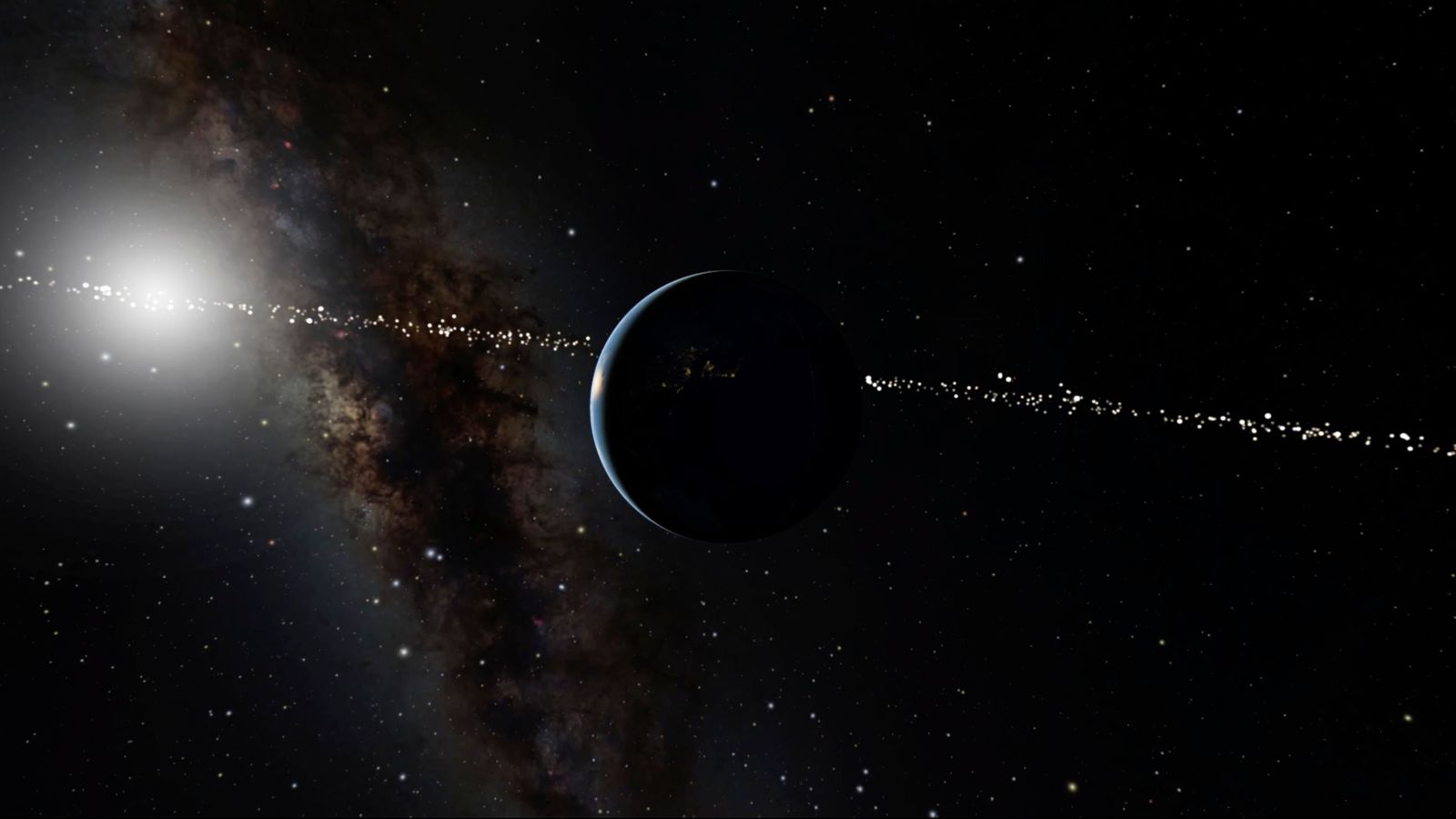Planets where alien life could be able to observe human activity on Earth have been identified by scientists.
Astronomers from Cornell University estimate there are 29 potentially habitable planets in Earth’s cosmic neighbourhood where alien life could potentially see and hear evidence of humans.
Using a technique used to look for life on other planets, scientists calculated that 1,715 nearby star systems and hundreds of probable Earth-like planets circling those stars have had an unobstructed view of Earth during human civilization.
“When I look up at the sky, it looks a little bit friendlier because it’s like, maybe somebody is waving,” said Lisa Kaltenegger, director of the Carl Sagan Institute at Cornell University, and the report’s lead author.
Experts, including Stephen Hawking, have previously warned against trying to contact extra-terrestrial life because they could harm us.
But Ms Kaltenegger said if these planets have advanced life, someone out there could conclude there is life on Earth based on oxygen in our atmosphere or by the radio waves from human sources that have swept over 75 of the closest stars on her list.
“Hiding is not really an option,” she said.
“From the exoplanets’ point-of-view, we are the aliens. We wanted to know which stars have the right vantage point to see Earth as it blocks the Sun’s light and because stars move in our dynamic cosmos, this vantage point is gained and lost.”
Astronomers can find potentially habitable planets by watching them as they cross in front of the star they are orbiting.
Please use Chrome browser for a more accessible video player
Ms Kaltengger and Jacqueline Faherty, of the American Museum of Natural History, reversed this method and used the European Space Agency’s Gaia space telescope to see which star systems could see Earth as it passes in front of the sun.
They observed 331,312 star systems within 326 light-years of Earth and found that 1,715 could see it at some point in the past 5,000 years, including 313 that have now moved out of view
Another 319 will be able to see Earth in the next 5,000 years, included a few systems where scientists have spotted Earth-like planets.
The closest star on Ms Kaltenegger’s list is the red dwarf star Wolf 359, which is 7.9 light years away and has been able to see us since the mid-1970s.
Follow the Daily podcast on Apple Podcasts, Google Podcasts, Spotify, Spreaker
Carnegie Institution for Science’s Alan Boss, who wasn’t part of the study, called the research “provocative.”
He said in addition to viewing Earth moving in front of the star, space telescopes nearby could spot us even if the cosmic geometry is wrong.
“So intelligent civilizations who build space telescopes could be studying us right now.”
Mr Boss added that we should not expect aliens to show up anytime soon because of the length of time it takes messages and life to travel between stars and civilisations.






















